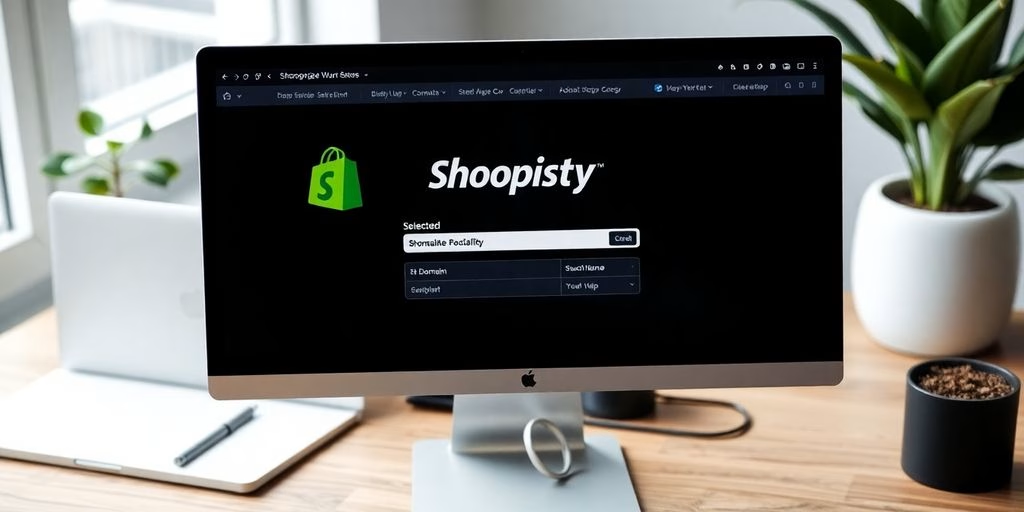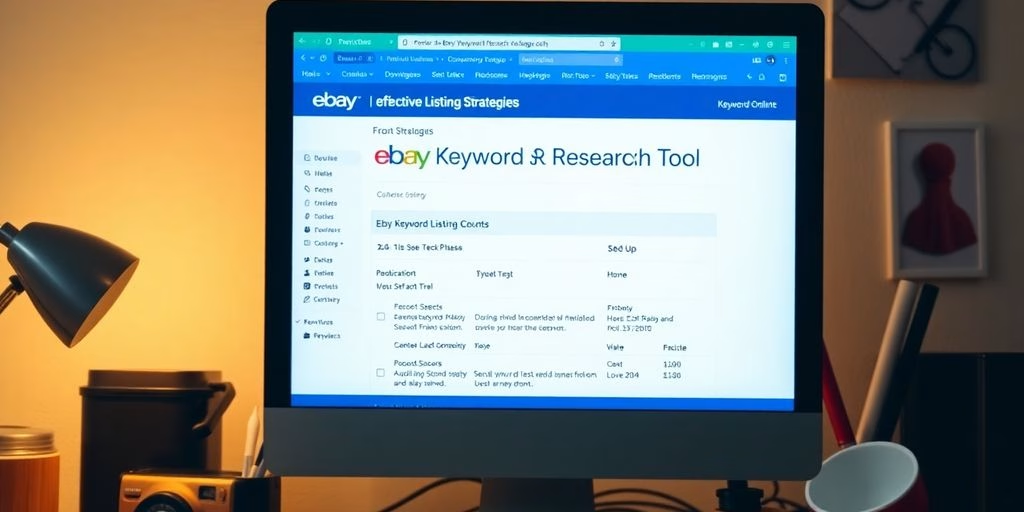Anchor text optimization is a nuanced aspect of SEO that involves the strategic use of clickable text in hyperlinks. Not only does it enhance user experience by providing clear indications of linked content, but it also signals to search engines the relevance and context of the linked page, influencing search rankings. Mastering the art of anchor text within your link building strategy is essential for improving visibility on search engines and driving targeted traffic to your website.
Table of Contents
ToggleKey Takeaways
- Effective anchor text optimization requires using relevant, descriptive keywords and avoiding generic phrases like ‘click here’ to improve both user experience and search engine visibility.
- Creating a natural-looking link profile is essential; this includes a mix of various types of anchor text such as branded, partial match, and semantically related phrases to avoid over-optimization penalties.
- Strategic link placement and ensuring contextual relevance are key to maximizing the SEO benefits of anchor text, as they help search engines understand the content’s context more accurately.
- Overusing exact match anchor text can lead to penalties; it’s important to balance keyword diversity with exact matches and incorporate semantic variations and partial matches for optimal results.
- Regular monitoring and adjusting of your anchor text strategy is crucial to align with best practices, avoid common optimization pitfalls, and ensure that the anchor text matches the linked content.
The Art of Crafting Click-Worthy Anchor Text

Choose Relevant and Descriptive Keywords
In the grand chess game of SEO, your anchor text is the queen. It’s versatile, powerful, and when used correctly, can checkmate your competition. Choosing the right keywords for your anchor text is akin to picking the right pieces to play in a chess match. It’s not just about the keyword’s relevance to the content it points to, but also about understanding the user’s search intent.
To ensure your anchor text hits the mark, consider these points:
- Relevance to your business and content
- High search volume with low competition
- Descriptive and encapsulates the essence of the linked content
- Reflects user intent and collective topic understanding
- Keep it concise, aim for 3-4 keywords/phrases
- Sprinkle synonyms to maintain a natural flow
Remember, a well-crafted anchor text should give users a clear idea of what to expect on the other side of the click. It’s the promise of value that you must fulfill.
By weaving in strategic keywords that resonate with your audience, you not only enhance user experience but also sail smoother through the turbulent waters of search engine algorithms.
Link Placement and Contextual Relevance
When it comes to link placement, think of it as a game of chess, where every move should be strategic and deliberate. Place links contextually where they add value to the reader, rather than just scattering them across your content like confetti at a parade. This not only enhances the user experience but also signals to search engines the relevance and value of your content.
Incorporate anchor text strategically within the body of your content, using it to weave a web of relevance that spiders – both the eight-legged and search engine varieties – can’t resist. Remember, the goal is to ensure that the anchor text accurately reflects the content of the linked page, creating a seamless journey for your users.
- Assess link placement methodically, ensuring it feels natural and intuitive.
- Utilize descriptive anchor text that clearly conveys the linked page’s content.
- Avoid generic phrases like “click here” which offer little SEO value.
A well-placed link is like a secret handshake between your content and search engines, a subtle nod that says, “Yes, this content is credible and valuable.”
Balancing Keyword Diversity and Exact Matches
In the grand SEO chess game, your anchor text is the queen – versatile and powerful. To avoid the checkmate of over-optimization, it’s essential to employ a diverse mix of anchor types. Just as a grandmaster varies their moves, so should you with your anchor text to maintain a natural profile that search engines favor.
- Exact Match: The anchor text that is the exact keyword or phrase you’re targeting.
- Branded: Using your brand name as the anchor.
- Generic: Anchors like “click here” or “read more”.
- Partial Match: Contains a variation of the keyword.
- Related Keywords: Utilizes synonyms or related topics.
Remember, a well-rounded strategy is not just about avoiding penalties; it’s about crafting a link landscape that is as rich and varied as the content it supports.
While exact matches can be a sharp tool in your SEO arsenal, they should be used sparingly. Instead, think of your anchor text as a tapestry, weaving in different threads to create a cohesive and attractive picture for both users and search engines.
Navigating the Seas of Link Building with Anchor Text

Understanding the Role of Anchor Text in SEO
Dive into the world of SEO, and you’ll find that anchor text is not just a drop in the ocean. It’s the rudder that steers the ship of link building towards the horizon of high rankings. Anchor text optimization is a cornerstone of SEO success, guiding search engines through the waves of the web to understand the content of your linked pages.
- Relevance: The anchor text should mirror the content of the landing page, acting as a signpost for both users and search engines.
- Descriptive Keywords: Opt for anchor text that is rich in keywords, but avoid overstuffing. Think ‘treasure map’ rather than ‘X marks the spot’.
- User Experience: The anchor text should enhance the user’s journey, not derail it with irrelevant or misleading cues.
By mastering the art of anchor text, you not only polish the user experience but also send clear signals to search engines about the content and context of your links.
Remember, SEO success relies on quality backlinks, off-page strategies, and link building control. Focus on relevance, trustworthiness, and monitoring for excellence and success. Meanwhile, engaging content remains the beacon that attracts visitors, with link audits and guest posting shining as key tactics for authority and visibility.
Creating a Natural-Looking Link Profile
In the quest for SEO success, a natural-looking link profile is akin to the holy grail. Diversity is the spice of life, and the same goes for your backlink portfolio. A varied link profile signals to search engines that your content is valuable across the digital ecosystem, not just in niche corners of the web. Here’s how to cultivate that coveted organic feel:
- Aim for a mix of dofollow and nofollow links to simulate natural linking behavior.
- Secure backlinks from a variety of domains, including both high and low authority sites.
- Ensure that the anchor text varies but remains contextually relevant to the linked content.
- Incorporate links from different types of content, such as blog posts, forums, and news articles.
Remember, a natural link profile doesn’t happen overnight. It’s the result of strategic planning and ongoing effort. Patience and persistence are your allies in this endeavor.
While it’s tempting to chase after every backlink opportunity, quality should never be sacrificed for quantity. A single link from a reputable source can be worth more than a dozen from questionable origins. Keep a close eye on your link building control, and don’t shy away from pruning links that don’t meet the mark. After all, in the world of SEO, it’s not just about being seen—it’s about being seen in the right light.
The Impact of Anchor Text on Offsite SEO
When it comes to offsite SEO, anchor text is the silent workhorse powering your link building efforts. Strategize link building with quality backlinks from reputable sources to sail smoothly on the search engine seas. Monitoring your backlink profile using tools is not just a good practice; it’s a treasure map to SEO success.
- Quality backlinks from reputable sources
- Regular monitoring of backlink profile
- Focus on relevance and trustworthiness
A diverse anchor text portfolio is your life jacket in the choppy waters of SEO. It keeps you afloat amidst algorithm updates and ensures you don’t drown in a sea of sameness.
However, don’t let your ship hit an iceberg by overusing exact match anchor text. Incorporate a variety of anchor types, including branded, partial match, and semantic variations, to create a natural-looking link profile. This not only pleases the search engine gods but also caters to the mobile-savvy sailors navigating your content on smaller screens.
Anchor Text Optimization

Best Practices for Anchor Text Optimization
To sail smoothly in the vast ocean of SEO, one must master the craft of anchor text optimization. Keep your anchor text relevant and descriptive, ensuring it’s a beacon guiding users to the treasure they seek. Here’s a chest of best practices to unlock:
- Use a mix of exact match, partial match, and branded anchor texts to maintain a natural profile.
- Prioritize user experience by making anchor text intuitive and indicative of the linked content.
- Avoid over-optimization; search engines frown upon it as much as pirates do upon scurvy.
Remember, the goal is not just to attract clicks but to provide value and relevance, making each link a plank in the bridge towards high domain authority.
In the quest for high-quality links, one must navigate through the strategies of broken link building, manual outreach, and self-created links. It’s a continuous journey of monitoring and optimizing link building efforts for a robust SEO foundation. And let’s not forget, technical SEO optimizations are the bedrock upon which your link building ship must sail.
Avoiding the Pitfalls of Over-Optimization
In the quest for SEO dominance, it’s easy to fall into the trap of over-optimizing anchor text. Avoid common SEO errors: like a ship navigating through treacherous waters, your anchor text strategy should steer clear of keyword stuffing, which is akin to a neon sign in a library – glaring and out of place. Instead, focus on creating human-friendly content that naturally incorporates keywords, ensuring a seamless voyage for your readers.
Avoiding over-optimization requires a delicate balance. Here’s how to keep your anchor text strategy on an even keel:
- Use a variety of anchor text types, including branded, generic, and partial match phrases.
- Ensure anchor text relevance to the linked content, avoiding misleading or unrelated links.
- Monitor your link profile for signs of over-optimization and adjust accordingly.
By maintaining a natural link profile, you not only enhance user experience but also sail smoothly past potential SEO penalties. Remember, a diverse anchor text portfolio is key to a robust SEO strategy.
Lastly, don’t forget to build high-quality links through methods like broken link building and manual outreach. These practices, along with a focus on on-page optimization, are crucial for the success of your website. Keep an eye on technical SEO to support a strong domain authority, ensuring your site remains afloat in the vast ocean of search results.
Optimizing for Mobile Devices and User Experience
In the realm of anchor text optimization, the surge of mobile browsing has ushered in a new set of rules. Mobile optimization is not just a buzzword; it’s a user’s ticket to a seamless digital journey. Links must be thumb-friendly, ensuring that they are easily tappable without the frustration of misdirected clicks.
- Ensure links are adequately spaced for touchscreens
- Keep anchor text short and concise
- Prioritize responsive design for optimal viewing on various devices
Speed is the essence of the mobile experience. Slow-loading pages are the arch-nemesis of user engagement, pushing your audience towards the ‘back’ button faster than you can say ‘click here’.
Remember, a mobile-friendly site is not just about aesthetics; it’s about functionality. Users should not have to pinch, zoom, or rotate their screens to interact with your content. By optimizing for mobile devices, you’re also optimizing for user satisfaction, which is a cornerstone of effective SEO.
Relevance vs. Variety

Striking the Right Mix of Anchor Text Types
In the grand tapestry of SEO, your anchor text is the thread that can either weave a pattern of success or tangle you up in knots. Striking the right mix of anchor text types is akin to finding the perfect spice blend for a gourmet dish; too much of one flavor and you’ll overwhelm the palate, too little and you’ll be forgotten as bland. To avoid the dreaded label of ‘over-optimized’, consider the following:
- Branded anchors: Your brand is your signature, use it.
- Generic anchors: Sometimes, ‘click here’ is just enough.
- Exact match anchors: Use sparingly, like a potent chili.
- Partial match anchors: A dash of relevance without the burn.
- LSI keywords: Synonyms and related terms add depth.
Remember, a natural-looking link profile is not just about avoiding penalties; it’s about crafting an authentic experience for your users. The goal is to guide them with clear, descriptive links that enhance their journey, not to lead them astray with a maze of over-optimized keywords.
In the end, it’s about balance. Use a variety of anchor text types to create a rich, user-friendly tapestry that search engines can’t help but admire. After all, a diverse anchor text profile signals to Google that there’s a genuine brand behind the links, not just an SEO robot.
The Consequences of Overusing Exact Match Anchor Text
Sail too close to the wind with exact match anchor text, and you might just capsize your SEO efforts. Overuse of exact-match keywords can trigger alarms at Google HQ, suggesting manipulation rather than relevance. It’s akin to wearing a neon sign that says ‘I’m trying too hard!’ Instead, a kaleidoscope of anchor text types should be in your SEO toolkit.
Incorporating Semantic Variations and Partial Matches
Sailing the SEO seas requires more than a compass; it demands a savvy use of language that goes beyond the robotic repetition of keywords. Incorporating semantic variations and partial matches in your anchor text is like adding spices to a stew—it enriches the flavor and appeals to more palates. Instead of the monotonous “best SEO tools,” why not sprinkle in some “top rated SEO software” or “most popular marketing solutions”? This not only avoids the siren call of over-optimization but also provides search engines with a tapestry of context around your website’s content.
- Use synonyms and LSI keywords for semantic richness.
- Aim for a mix of exact match, partial match, and natural language variations.
- Ensure anchor text diversity to avoid search engine suspicion.
By diversifying your anchor text, you’re not just playing it safe; you’re strategically positioning your content in a way that’s both user-friendly and search engine savvy.
Remember, the goal is to create a natural-looking link profile that mirrors organic referencing. It’s a balancing act that, when done right, can lead to a treasure trove of SEO gold.
Dodging the Anchor Text Optimization Icebergs

Common Mistakes to Avoid in Anchor Text Optimization
Navigating the waters of SEO can be treacherous, and when it comes to anchor text, there are certain blunders that can sink your site’s rankings faster than a lead balloon. Avoid using non-descriptive or irrelevant anchor text; it’s the equivalent of sending your users on a wild goose chase. Instead, ensure that all links use relevant and descriptive keywords related to the target page, steering clear of the dreaded keyword stuffing and linking to low-quality content.
Here’s a quick checklist to keep your anchor text shipshape:
- Use varied anchor text types to avoid over-optimization.
- Aim for natural language and avoid forced keywords.
- Ensure anchor text matches the content being linked.
- Optimize for mobile devices and user experience.
Remember, a diverse mix of anchor text types not only appeases search engines but also enhances user experience.
By dodging these common pitfalls, you’ll keep your SEO strategy afloat and your site sailing smoothly towards the horizon of high rankings.
Ensuring Anchor Text Aligns with Linked Content
When it comes to the nautical journey of SEO, ensuring your anchor text is in shipshape alignment with the linked content is paramount. Use descriptive anchor text that not only entices clicks but also accurately reflects the destination page. This is the compass that guides both users and search engines to the treasure trove of your content.
Avoid the siren call of generic phrases like “click here,” which can lead to murky waters of user confusion and search engine distrust. Instead, sail towards clarity with anchor text that provides a clear understanding of the linked content. Here’s a quick checklist to keep your anchor text on course:
- Utilize descriptive and relevant keywords
- Avoid vague or misleading phrases
- Ensure clarity of the destination content
Remember, a well-matched anchor text to content ratio is like a well-navigated ship: it ensures a smooth journey for users and a favorable wind for search engine rankings.
Monitoring and Adjusting Your Anchor Text Strategy
Sailing the SEO seas requires a vigilant eye on the compass of your anchor text strategy. Regular audits of your anchor text distribution are essential to ensure that you’re not veering off course. A diverse anchor text profile is the wind in your sails, but too much uniformity can lead to stagnant waters.
Monitoring your anchor text involves more than a cursory glance; it’s about delving into the depths of your backlink profile and adjusting your course as needed. Here’s a quick checklist to keep your strategy shipshape:
- Review your anchor text for over-optimization red flags.
- Ensure a healthy mix of exact, partial, and branded anchor text.
- Analyze the performance of different anchor text types.
- Update anchor texts that no longer align with your content.
Remember, the goal is to maintain a natural-looking link profile that resonates with both users and search engines.
By keeping a close watch on your anchor text strategy and making adjustments where necessary, you can avoid the icebergs of over-optimization and sail smoothly towards the horizon of high rankings.
Navigating the complex world of SEO can be treacherous, but with the right strategies, you can avoid the ‘Anchor Text Optimization Icebergs’ that may sink your site’s ranking. Ready to chart a course to success? Contact us now and let’s achieve remarkable success together! Our team is eager to assist you with personalized strategies that will keep your website sailing smoothly towards the top of search engine results.
Conclusions
In the grand SEO tapestry, anchor text is the thread that weaves through the fabric of link building, adding both color and context. It’s the secret sauce that, when seasoned just right, can tantalize the taste buds of search engines and users alike. Remember, while it’s tempting to stuff your links with exact-match keywords like a Thanksgiving turkey, moderation and variety are the spices of life—and of a robust SEO strategy. So, go forth and sprinkle your anchor texts with a mix of branded, generic, and partial match flavors. Keep it relevant, keep it descriptive, and above all, keep it natural. After all, in the world of SEO, it’s not just about being seen—it’s about being savored.
FAQs
What is anchor text and why is it important for SEO?
Anchor text is the clickable text in a hyperlink that is often highlighted and underlined. It’s important for SEO because it helps search engines understand the context of the linked page, which can influence the page’s ranking for certain keywords.
How can over-optimization of anchor text affect my website?
Over-optimization of anchor text by repeating exact-match keywords or using non-descriptive words can lead to penalties from search engines like Google, as it may be seen as manipulative. It’s crucial to create diverse types of anchor texts to avoid such issues.
What types of anchor text should I use to build a natural-looking link profile?
To build a natural-looking link profile, use a variety of anchor text types, including branded, generic, partial match, and semantic variations. This diversity helps maintain a healthy link profile and avoids triggering search engine penalties.
How does the placement of anchor text within content affect SEO?
The placement of anchor text within content should be strategic, enhancing user experience and SEO performance. Links should be contextually relevant and placed where they provide value to the reader, which can positively impact search engine rankings.
What are some common mistakes to avoid in anchor text optimization?
Common mistakes include overusing exact match anchor text, using non-descriptive or irrelevant anchor text, and not aligning the anchor text with the linked content. Avoiding these pitfalls helps prevent penalties and improves the effectiveness of your SEO strategy.
What are the best practices for anchor text optimization?
Best practices for anchor text optimization include choosing relevant and descriptive keywords, using a diversity of anchor text types, optimizing for mobile devices, avoiding over-optimization, and ensuring that the anchor text matches the content being linked to.









































































































